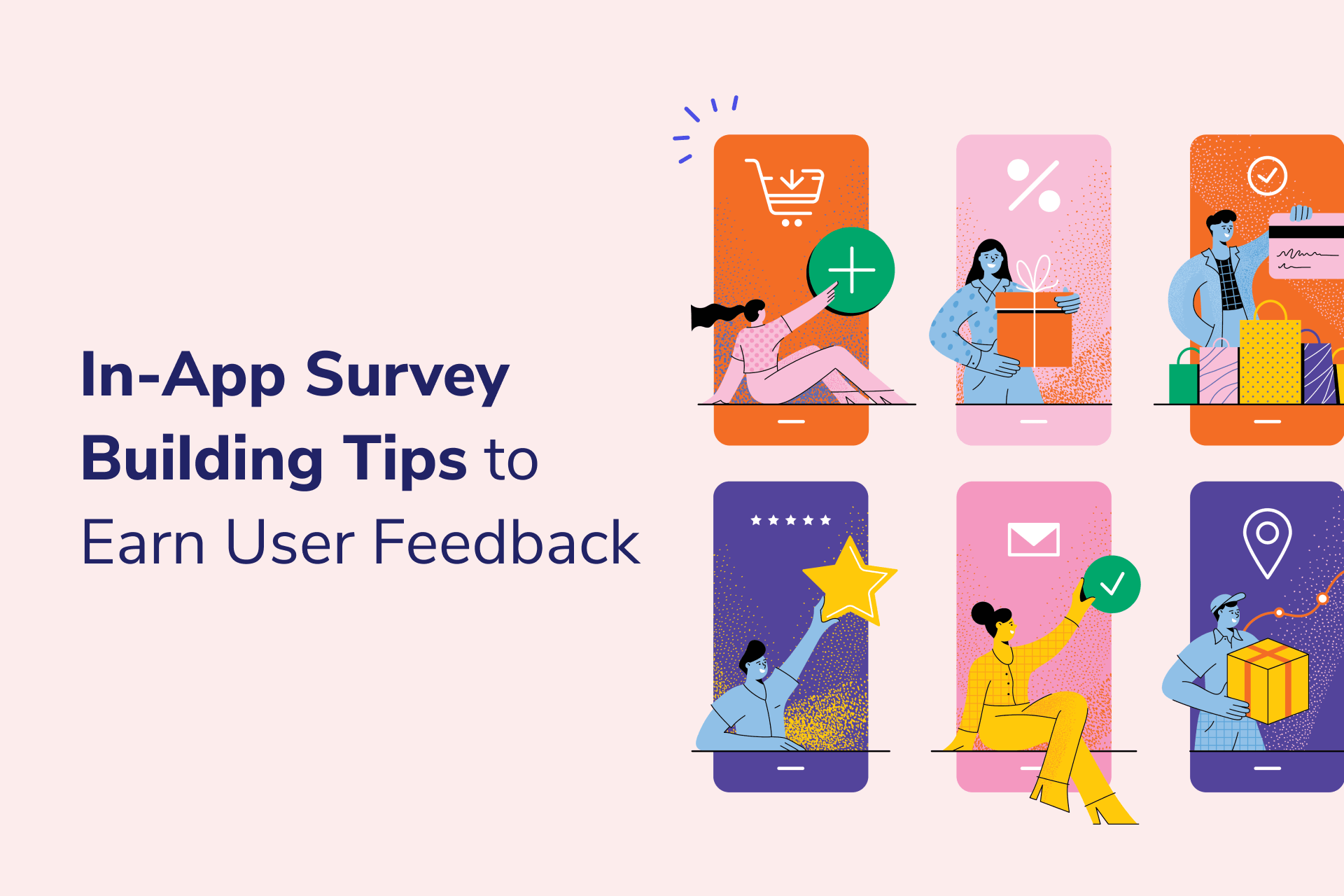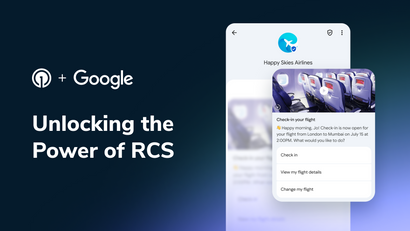In-app customer surveys provide direct insight into your customers’ wants, needs, complaints, and reflections around your brand and their in-app experience.
Gathering user feedback is crucial in driving product development and mapping the user journey. In-app surveys provide a direct and targeted line of communication with your customers, which allows you to seamlessly collect feedback on their experience and subsequently pivot your product to meet their needs.
In-app surveys differ from full-length surveys in that they are shorter, more contextually targeted, and real-time. They ask users for their opinions while they are engaged with your app, rather than sending you to a third-party survey provider.
In-app surveys offer the following unique benefits over traditional surveys.
Measuring Customer Experience in Real-Time
In-app surveys give you the opportunity to measure the quality of the customer experience in real-time. What better moment to ask how a user feels about a certain feature or component of your UI than while they’re actively interacting with your app?
It’s well known that customer experience is a valuable business driver. According to available data, 81 percent of organizations believe CX to be a competitive differentiator. In the same study, companies reported a 92 percent increase in customer loyalty, an 84 percent increase in revenue, and a 79 percent savings in costs as a result of a positive customer experience. Making improvements to CX is clearly valuable in boosting these business outcomes.
Gathering Contextual User feedback
One key advantage of in-app surveys is that they can be precisely timed to appear at any point in the in-app experience. When you tailor in-app surveys, they can appear at different intervals in the user journey. This means you can target specific behaviors or milestones with the utmost precision. Unlike traditional surveys, which may include several questions that don’t directly apply to a given user, in-app surveys only request feedback from users who have actively used the product feature you are evaluating. This is less annoying to the user and more efficient for troubleshooting the performance of distinct features. Feedback that’s segmented in this way tends to be more valid and more accurately reflects the use case you’re interested in understanding.
Gaining Specific, High-Quality Input
While traditional surveys often gather broad and general feedback, in-app micro surveys request feature-specific information that directly informs your team around certain elements of your app or brand experience. This type of precise user feedback provides actionable insights for your team, as you can make product improvements based on these explicit recommendations. With these clear insights, you’ll be better equipped to allocate your company’s resources efficiently. Not only that, but respondents who have just used the feature in question will provide higher quality feedback than if they had used your app six months ago and are trying to answer the same question via an email survey, for example.
High Response Rates
In-app surveys have higher response rates than traditional surveys for several reasons. Modern humans have a notoriously short attention span, so taking a long brand survey that requires time and energy can be deterring and lead to low response rates. In a generic survey, users have to weed through questions that may be irrelevant to them and expend excess energy in completing the task. In contrast, in-app surveys are short, quick, and live in the in-app experience, so there’s less friction to completing the questions you propose.
Building Customer Relationships
Studies show that customer input breeds trust and loyalty with your brand. By requesting user feedback in real-time, you show you care about your customers’ opinions. They are likely to feel more heard and better served by your brand when you ask for their input.
Types of Surveys
Now that we’ve laid out some high-level benefits you can glean from in-app surveys, let’s discuss what types of information you can gather with these tools.
- User Effort Scores (UES): User Effort Scores help businesses understand how friendly your app, feature, or other elements is for a given user. The user is generally asked on a scale of one to ten, how easy it is to perform the given action or task. For example, you might ask your customers how easy it was to make a reservation through your app, rating their experience from one to ten, one being the easiest, and ten being the hardest..
- Customer Effort Score (CES): Customer Effort Score is a measure of how much effort a customer exerted to resolve an issue, fulfill a request, make a purchase or return, or get a question answered. CES is an indicator of customer loyalty, and like a UES, asks users to rate their ease of interaction, usually on a scale of one to ten.
- Net Promoter Score (NPS): A Net Promoter Score is the gold standard of customer experience metrics. This measures customer loyalty and asks users how likely they are to recommend you on a scale of zero to ten.
- Feature Feedback: Use in-app surveys to evaluate how well individual features are performing for your users. Time these requests after a user has taken action in your app to use the feature in question.
Key Considerations for Collecting In-App Customer Feedback
When collecting in-app customer feedback, it’s important to maintain certain best practices to make sure that your surveys are effective.
Purpose
Define the objective of your survey before administering it to your users. Make sure your questions address the issue or problem you are trying to solve. Phrase your questions so that the feedback is actionable and can feed into continuous product improvement. What are you trying to learn, and what’s the outcome you’re hoping to get from the exercise?
Timing
You’ll want to make sure you ask for feedback at the right time. Don’t prompt users too soon, in the middle of a task, or when they have recently experienced a negative in-app event. The best time to request feedback is when a user has completed an action that leaves them excited or fulfilled. For example, an excellent time to ask for feedback could be after a user has leveled up in your gaming app or after a customer has received a package from your brand.
Segmentation
While you’re collecting in-app survey feedback, make sure you're pairing the right questions with the right user segments. It seems intuitive, but make sure the questions you’re sending to the given segment are contextually relevant. For example, make sure you're asking an established purchaser about the delivery process, rather than someone who's never placed an order.
Release personalized surveys to different user segments to improve the user journey for distinct buyer personas. If you want to get fancy, you can administer a general survey like an NPS to all your users and then subsequently segment and survey users based on their initial responses.
Length
When it comes to in-app surveys, the shorter and more targeted the better. In order to retain users and avoid detracting from the in-app experience, you should administer short in-app surveys and continue with subsequent surveys when necessary. As a best practice, you should ask 1-2 questions per in-app survey.
Get Started with OneSignal
OneSignal is designed to help you send notifications and seamlessly manage your user communication across every channel, including in-app messaging, mobile push notifications, web push notifications, bulk SMS, and email. Our platform is quick to set up and makes it easy to create custom in-app surveys and app rating requests without doing any development work. If you don't have a OneSignal account, you can create one for free and build your app survey today. Don't take our word for it — sign up and see for yourself!
Get Started for Free



